NCERT Solutions Class 9 Science Chapter 12 - Improvement in Food Resources
NCERT Solutions for Class 9 Science Chapter 12 – Improvement in Food Resources are essential for understanding key Biology and Agriculture concepts in the CBSE curriculum. These well-structured answers help students grasp topics like crop improvement, animal husbandry, fertilizers, and sustainable farming practices. Designed as per the latest syllabus, these solutions strengthen conceptual clarity and improve exam preparation. Ideal for revision and practice, they encourage logical thinking and scientific understanding, making them a valuable study tool for scoring well in Class 9 Science exams.
NCERT Solutions Class 9 Science – Improvement in Food Resources – Exercise Images
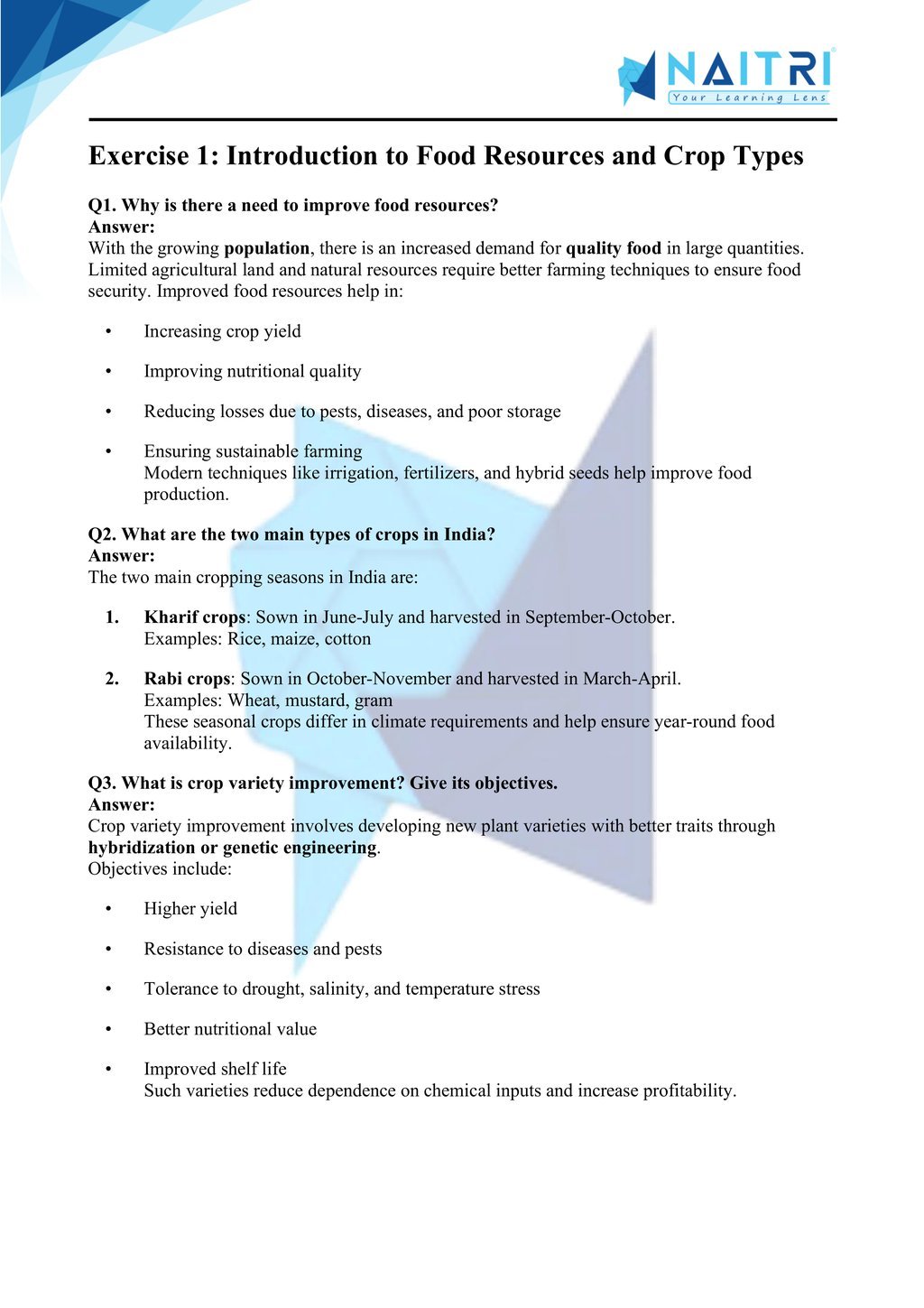
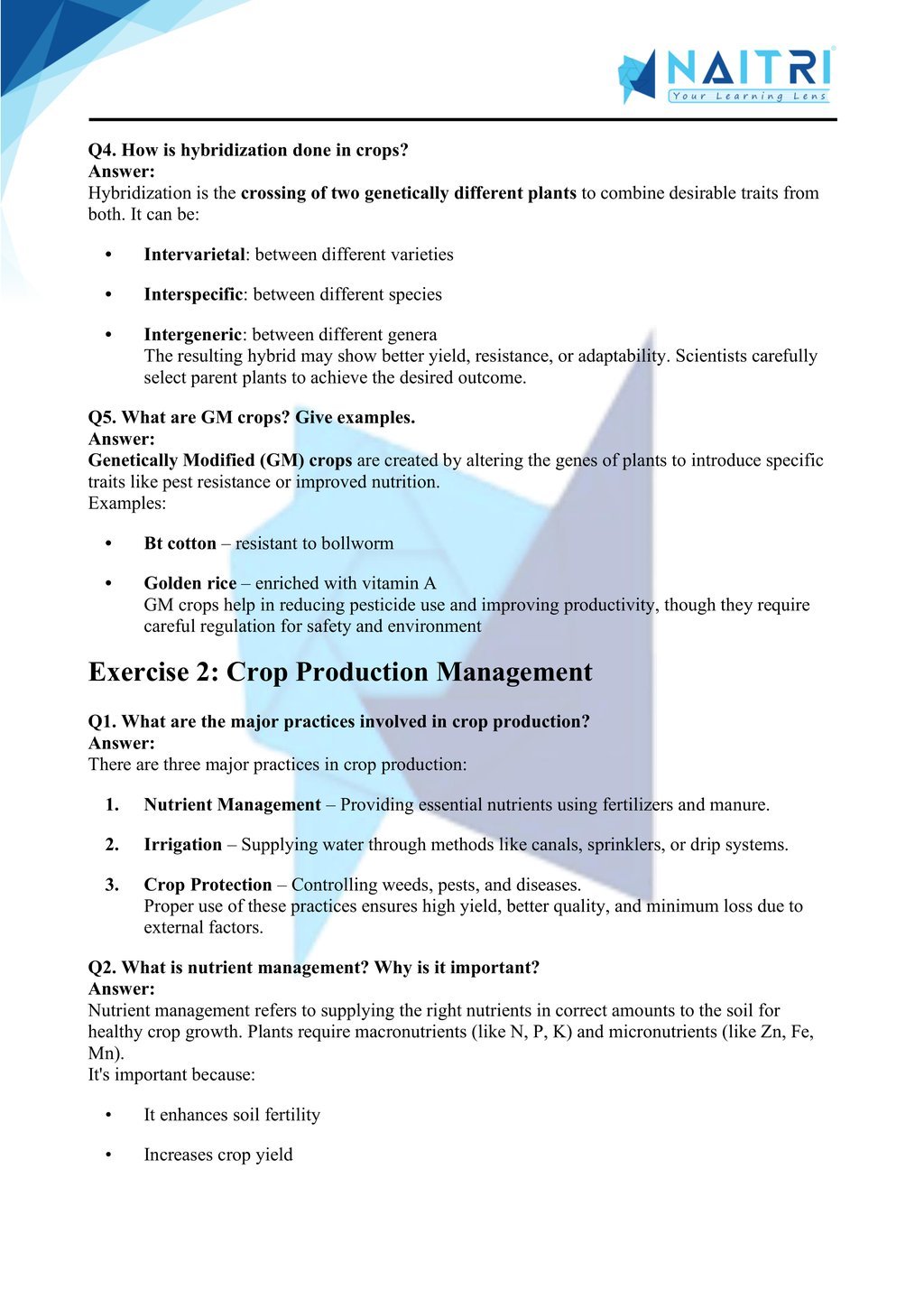
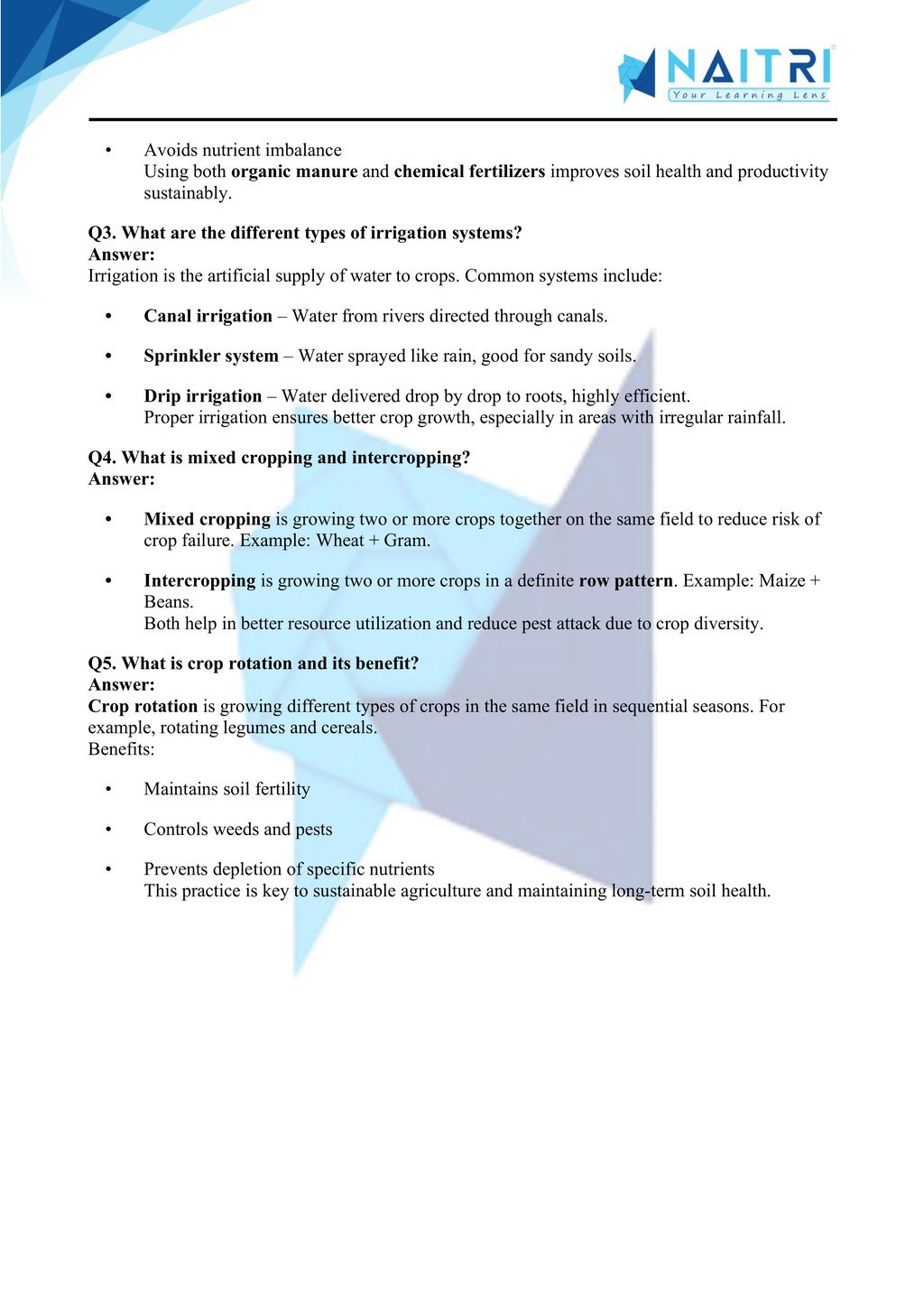
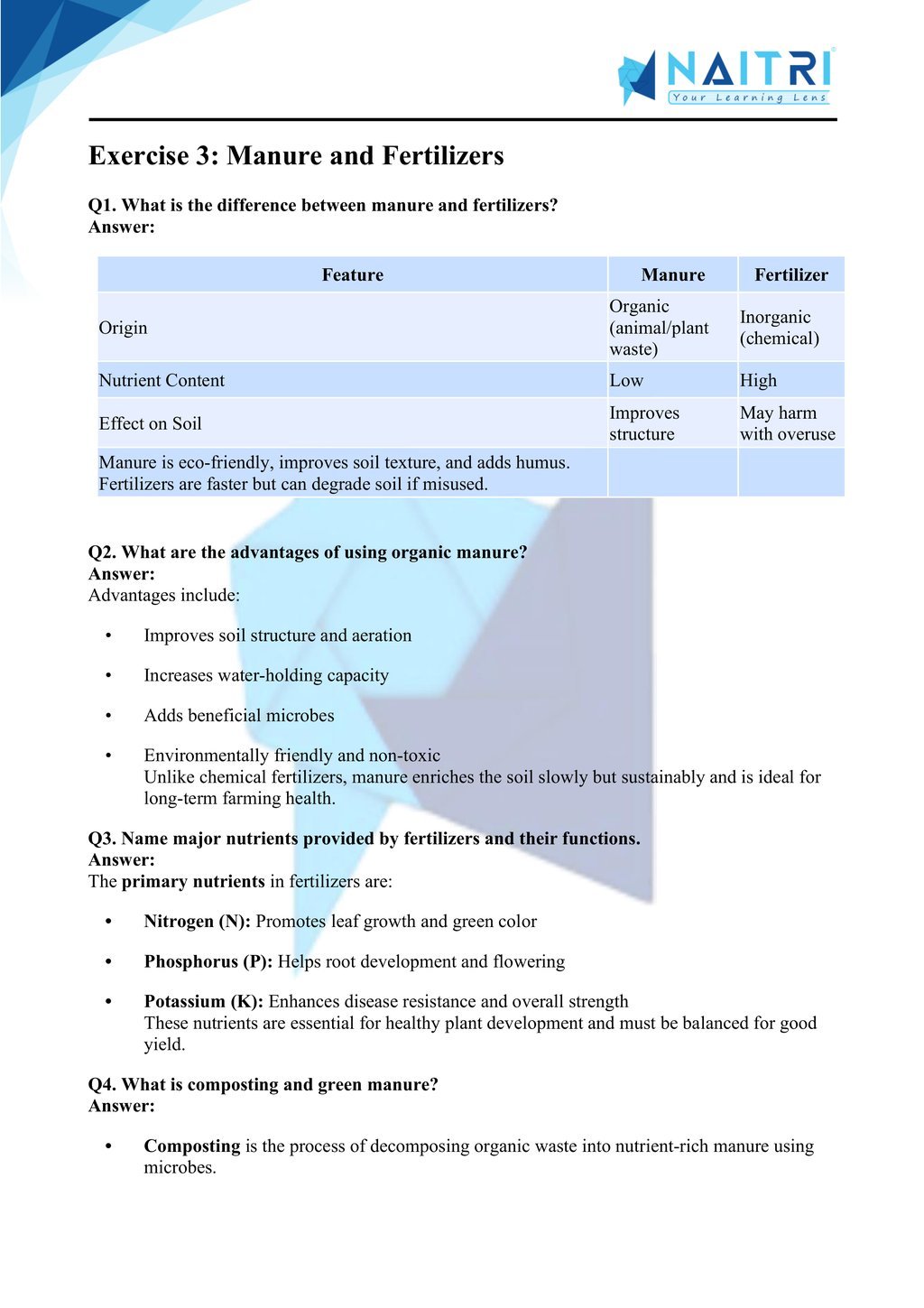
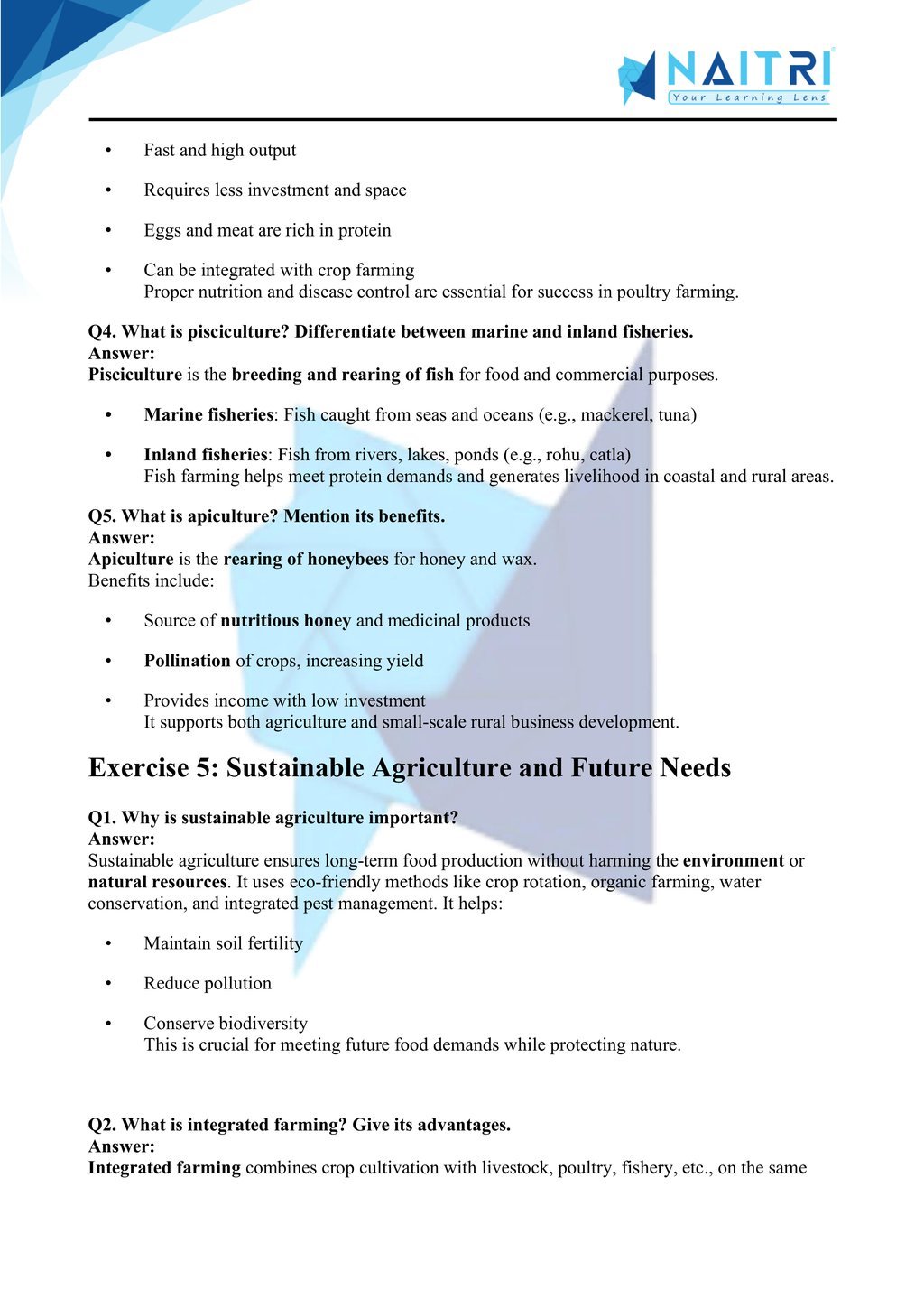
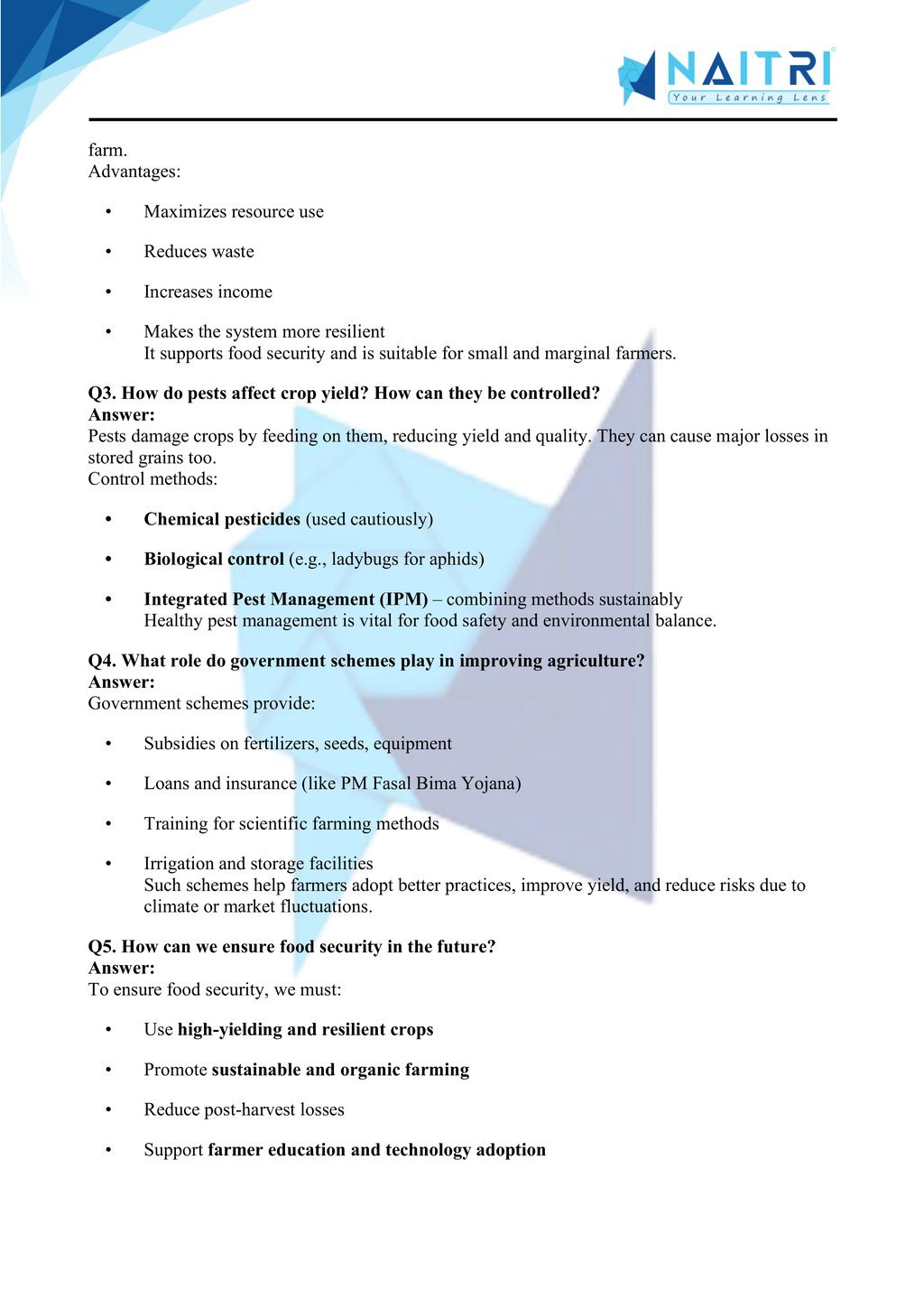
Experience Science Like Never Before – With AR!
Understanding Improvement in Food Resources is now more exciting and immersive! With the NAITRI App, you can explore complex science concepts through Augmented Reality (AR). Observe crops grow, livestock thrive, and farming technologies evolve — right in front of you. Our AR-powered lessons make learning interactive, 3D, and fun, helping you retain concepts better and enjoy every topic.



Visualize . Interact . Understand . The future of learning is here
Improvement in Food Resources – Important Questions with Answers
1. What are the two main types of food sources for humans?
Answer: Plant-based and animal-based food sources.
2. What is crop production?
Answer: Crop production refers to growing plants in large quantities for food or commercial purposes.
3. Name the three major types of crop improvement practices.
Answer:
Crop variety improvement
Crop production improvement
Crop protection improvement
4. What is hybridisation?
Answer: Hybridisation is the process of crossing two genetically different plants to get a new variety with desired traits.
5. Name two factors that affect crop yield.
Answer:
Genetic factors (crop variety)
Environmental factors (soil, climate, irrigation, etc.)
6. Name two methods of irrigation.
Answer:
Drip irrigation
Sprinkler system
7. Why is organic farming important?
Answer: Organic farming uses natural methods and materials, which are eco-friendly and free from harmful chemicals.
8. What are manures?
Answer: Manures are organic substances obtained by decomposition of plant and animal wastes.
9. How are manures different from fertilisers?
Answer:
Manures are natural, organic and improve soil fertility slowly.
Fertilisers are chemical-based and provide quick nutrient supply.
10. Name two examples each of macronutrients and micronutrients for plants.
Answer:
Macronutrients – Nitrogen (N), Phosphorus (P)
Micronutrients – Zinc (Zn), Iron (Fe)
11. What are the advantages of crop rotation?
Answer:
Prevents soil depletion
Controls pests and weeds
Improves soil fertility
12. What is mixed cropping?
Answer: Growing two or more crops simultaneously on the same field.
13. What is intercropping?
Answer: Growing two or more crops in a definite row pattern to utilise space and nutrients efficiently.
14. Name two common crop diseases and their causes.
Answer:
Rust of wheat (fungus)
Blast of rice (fungus)
15. What are weeds?
Answer: Unwanted plants that grow along with crops and compete for nutrients, water, and sunlight.
16. Name two common weed control methods.
Answer:
Manual weeding
Use of weedicides
17. What is animal husbandry?
Answer: The scientific management of farm animals for food production and other uses.
18. Name four practices of animal husbandry.
Answer:
Feeding
Breeding
Disease control
Shelter management
19. What is poultry farming?
Answer: Rearing of domesticated birds like hens and ducks for eggs and meat.
20. Name two improved poultry breeds.
Answer:
Leghorn
Rhode Island Red
21. What is the difference between milk yield improvement and breed improvement in cattle?
Answer:
Milk yield improvement focuses on better feeding and care.
Breed improvement focuses on cross-breeding or selection of superior animals.
22. What is apiculture?
Answer: Apiculture is the rearing of honeybees for honey and wax production.
23. Name two types of bees used in apiculture.
Answer:
Apis cerana indica
Apis mellifera
24. What is aquaculture?
Answer: Rearing, breeding, and harvesting of aquatic animals and plants for food.
25. What are the major sources of fish?
Answer:
Inland fisheries (rivers, lakes, ponds)
Marine fisheries (seas and oceans)
Improvement in Food Resources focuses on methods to increase the quality and quantity of food production. The chapter discusses agricultural practices, animal husbandry, and management of natural resources. It highlights scientific ways to improve crops and livestock using fertilizers, irrigation, and pest control. This chapter encourages awareness about food security, sustainable practices, and the importance of science in everyday life.
Related Chapters You May Like
- Chapter – 1 Matter in Our Surroundings
- Chapter – 2 Is Matter Around Us Pure
- Chapter – 3 Atoms and Molecules
- Chapter – 4 Structure of the Atom
- Chapter – 5 The Fundamental Unit of Life
- Chapter – 6 Tissues
- Chapter – 7 Motion
- Chapter – 8 Force and Laws of Motion
- Chapter – 9 Gravitation
- Chapter – 10 Work and Energy
- Chapter – 11 Sound
Download Naitri App
Easy, Visual Learning — Right on Your Phone
Learn with Augmented Reality! The Naitri app makes CBSE and MP Board concepts interactive and fun — even in low-resource settings. Watch lessons, complete homework, take tests, and track progress — all in one place. Anytime. Anywhere.
Available on








